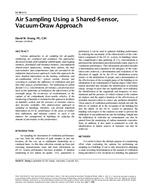The importance of follow ups of buildings’ energy use during operation to optimize the performance and identify deviations and errors has attracted attention during recent years. As buildings are becoming more energy efficient with a better exterior envelope, household electricity is becoming an increasingly important part of the total heating energy and, in turn, the optimization of the thermal performance of the exterior envelope. Variations between different years can be thought to have a significant impact. Unfortunately, it seems that enough knowledge, studies and data that describe how the household electricity varies between different years are missing. A low household electricity use during one year might imply a certain hvac and building design while a high household electricity use might imply another optimal design, and this may vary over time. This might also in part explain reported gaps between calculated and measured energy use. To supply the industry with reference data on typical variations during time and between different users, there is a need for several consecutive years of measurements of household electricity in the same apartments in a large enough sample of apartments to obtain good statistics. Household electricity has been measured in 539 apartments in 25 multi-family buildings in Sweden during six years. This paper presents statistics and characteristics of the variation between years and between different apartments and buildings. The results show large differences between years, regarding both apartments and buildings, and a conclusion is that this should be considered booth during design and operation.
Citation: 2016 Annual Conference, St. Louis, MO, Conference Papers
Product Details
- Published:
- 2016
- Number of Pages:
- 8
- Units of Measure:
- Dual
- File Size:
- 1 file , 1 MB
- Product Code(s):
- D-ST-16-C052


